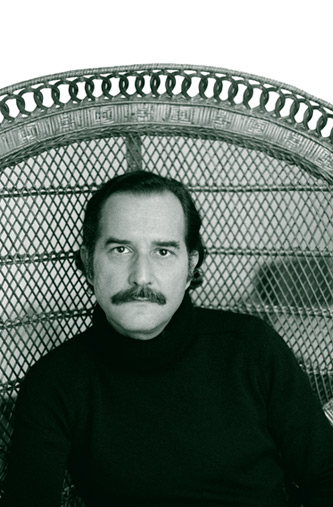Modern Languages and Literatures: Melodrama and the Social Imagination
Melodrama, says Matthew Bush, does not get the respect it deserves in the world of literature.
In books and movies, Bush acknowledges, a melodramatic work typically favors broad strokes over subtlety. Its plots are often contrived and its characters stereotyped. It makes a transparent appeal to the emotions and relies heavily on exaggeration, even sensationalism.
Nonetheless, Bush, an assistant professor of Spanish in the department of modern languages and literatures, confesses to a longtime fondness for melodrama. He especially enjoys the theatricality of the telenovelas, or soap operas, that are popular throughout Latin America and increasingly in the United States as well.
Bush is the author of Pragmatic Passions: Melodrama and Latin American Social Narrative, which analyzes novels by five Latin American writers. In Pragmatic Passions, Bush maintains that melodrama is utilized in high and low culture alike to highlight injustices while chronicling and reflecting trends in society and politics.
“People tend to think that melodrama is simplistic,” says Bush, “and that it is just for passive consumption, which supposedly typifies popular culture. That’s not necessarily the case. Melodrama plays on people’s anxieties and on their thinking about the way society works.”
Pragmatic Passions focuses on several popular books: The Death of Artemio Cruz by Carlos Fuentes of Mexico, Gabriela, Clove and Cinnamon by Jorge Amado of Brazil, Doña Barbara by Rómulo Gallegos of Venezuela, Tungsten by César Vallejo of Peru and Bewitched by Love by Roberto Arlt of Argentina. Most of these works have inspired either telenovela, film or theatrical adaptations, says Bush, and several have been adapted to the screen more than once.
“The authors whom I analyze in my book are some of the most renowned in Latin America,” says Bush. “Many readers would probably hesitate to categorize these works as melodrama because melodrama is seen as being cheap; it can’t be high art.
“But melodrama is not just employed in popular genres; it’s also employed by the so-called great authors. ‘High’ and popular culture both use similar elements to tell a story. I’m not trying to save or validate melodrama, but to say that it operates in a serious way, even if we’re not conscious of it, that is something central to our social imagination.”
Bush sees “important and evident connections” between the Latin American novels he analyzed and the novels of such 19th-century British authors as Charles Dickens and Jane Austen.
“The settings and social conditions may be totally different,” he says, “but all the authors use sentimentality as a means of examining social practices and conventions—the effects of industrialism in Dickens’ case, the role of manners and feminine agency in Austen’s case.”
Like their Latin American peers, says Bush, Dickens and Austen wrote novels that not only convey an emotionally fulfilling story, but also move readers to think about different social trends while they obtained pleasure from the text.
“Whether it’s a book by Dickens or Gallegos, Austen or Arlt, readers can take something more than just sentimentality from a melodrama. They read a book that reflects the society the characters live in.”
Story by Kurt Pfitzer
Posted on:


